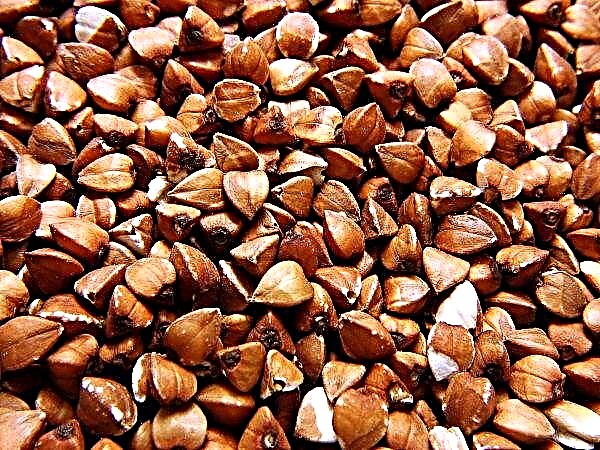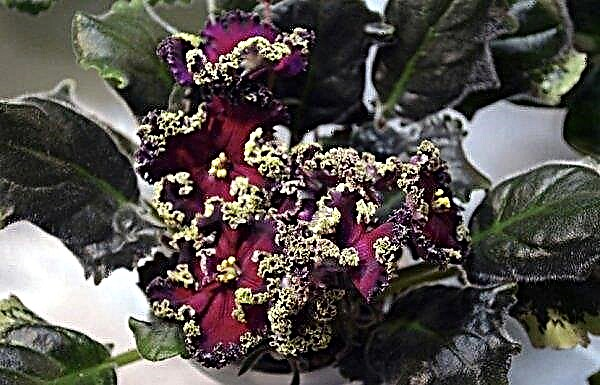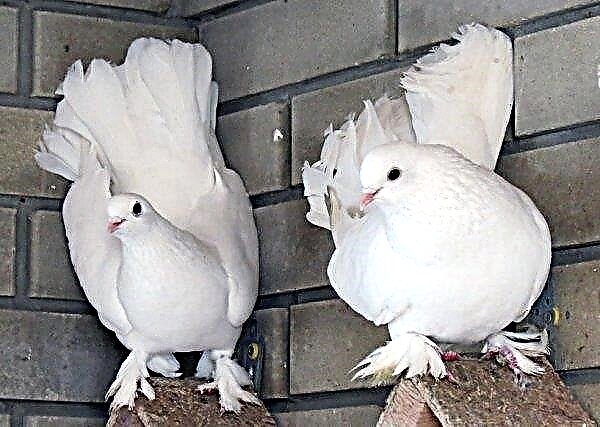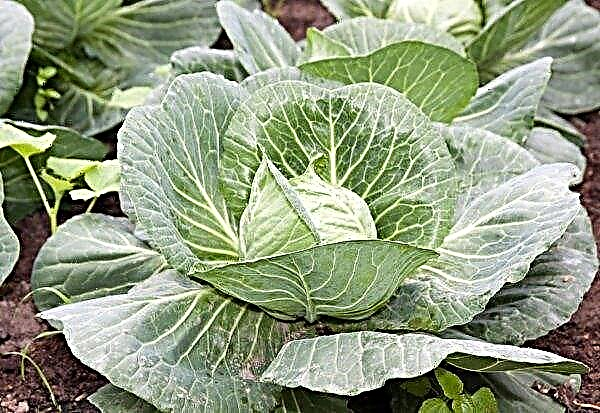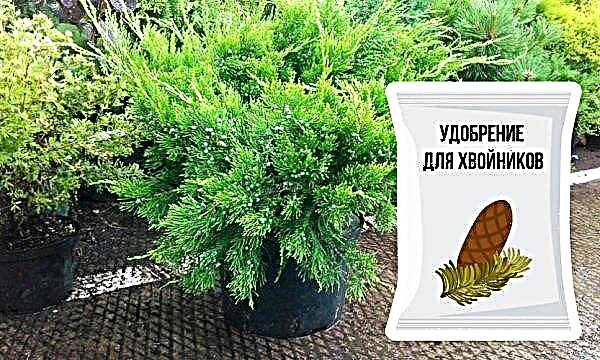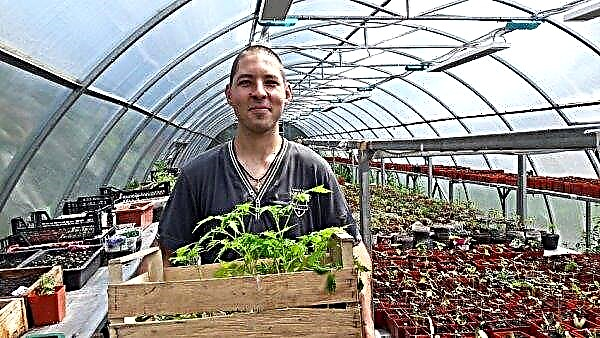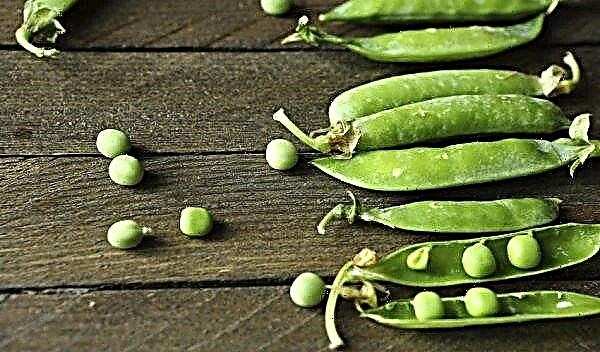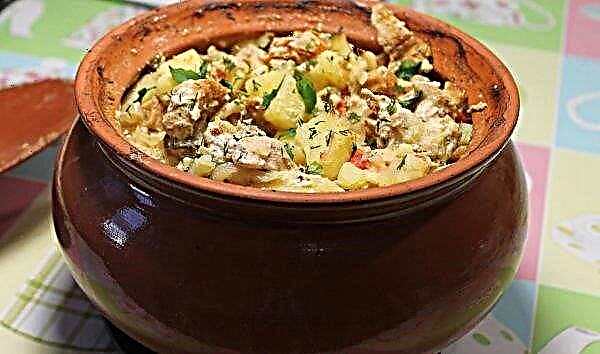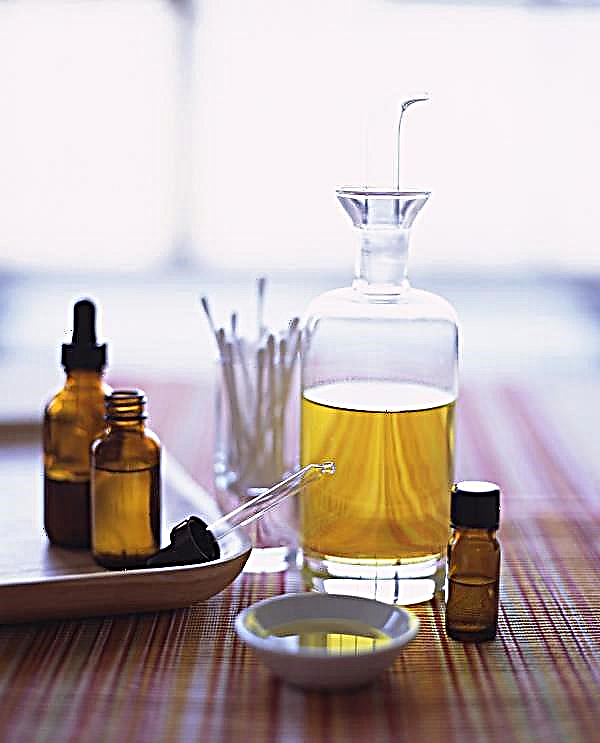A drinking bowl is an important tool for an apiary. Not a single beekeeper can do without this device. About what their types are and how to make the device yourself, read on in the article.
The value of drinking bowls for bees
Bees need water, like other living things. Without it, the vital activity of insects is impossible. To provide the bees with water, the owners install drinkers in the apiary.
Did you know? The ancient Greeks depicted bees on coins.
In different seasons, insects need a certain amount of water.
On a bee colony per day it is necessary:
- 45 ml in early spring;
- 300 ml in the summer during the period of honey collection;
- 100 ml by August;
- 30 ml starting in September.
Types and features of placement of drinking bowls
Watering devices for bees are divided into internal and external heated. Each type has its own characteristics, including seasonal ones.

Domestic drinkers
Domestic drinkers are also called individual. They are adapted to supply water directly to the hive. So each bee colony will drink the right amount of fluid.
Individual drinking devices are divided into two types:
- In-Zero. A tank and a device for water outlet are located in the hive.

- Mounted. The hole of the tank is located in the notch, while the tank itself is located outside the hive.
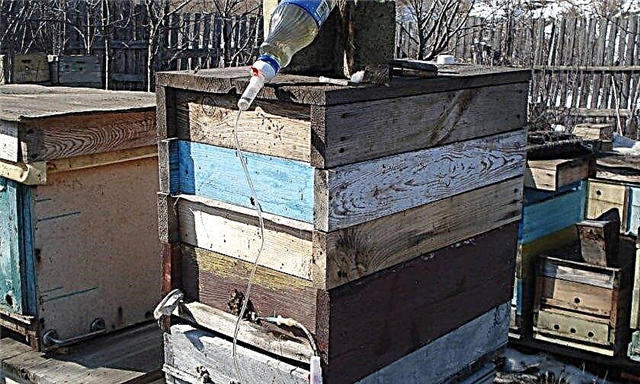
On sale there are full-fledged devices with a groove and capacity. Grooves are also sold separately, to which standard PET bottles with a capacity of 0.5–2 l are to be screwed.
Heated drinking bowls
After the end of winter, the bees wake up and begin their first departures from the hive. This is a period of adaptation when insects have not yet had time to finally wake up. From cold water they will experience stress. Most bees will die from hypothermia. In order to avoid consequences, heating is installed on the drinkers. The device maintains the water temperature at a sufficient level and does not allow the liquid to cool.
Did you know? Honey was valued in ancient Egypt not only as a food product. Historians claim that the Egyptians often paid honey taxes.
Seasonal drinkers
The water requirements of the bees vary depending on the season. Given this, in spring and winter, beekeepers change the location of drinking bowls.
Spring
With the onset of spring, bees fly out of the hives. During this period, beekeepers install external drinking devices. Devices must be heated. They should be located as close as possible to the hives. The simplest version of the device is a barrel with a crane. The faucet is ajar so that the insects can receive the required amount of water.
Winter
Bees spend the winter in the hive, so beekeepers install vacuum-type in-house drinkers. These devices are hermetically sealed and safe for insects. You can add fluid from the outside, which simplifies use.
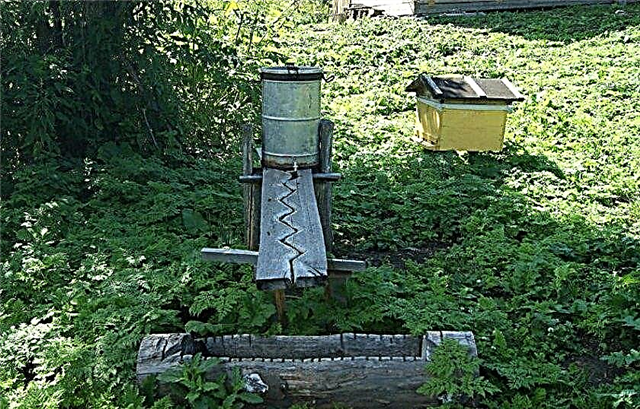
Making a drinker from a plastic bottle with your own hands
In the market for apiary products, you can find many options for such devices. Many beekeepers design devices with their own hands.
- Self-made devices have a number of advantages:
- simple technology;
- available materials;
- saving finance.
Materials for the manufacture
For the manufacture, prepare the following materials:
- Scotch;
- a piece of expanded polystyrene 70 × 120 × 20 mm;
- nails
- 0.5 liter plastic bottle.
Important! Instead of polystyrene foam, you can use wood, but it will be more difficult to cut.
Prepare also the tools:
- pencil;
- a ruler;
- stationery knife.
Step-by-step instruction
To make it right, you need to do such manipulations with your own hands:
- Divide with a pencil a piece of expanded polystyrene into two parts of 60 mm. The line should go exactly in the middle.
- On one of the halves, mark the groove of a convenient shape and cut it out. The hole must be through.
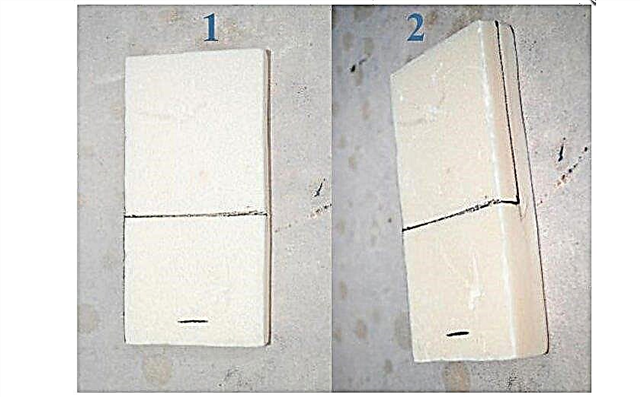
- At a distance of 10 mm from the edge of the second half, mark the line.
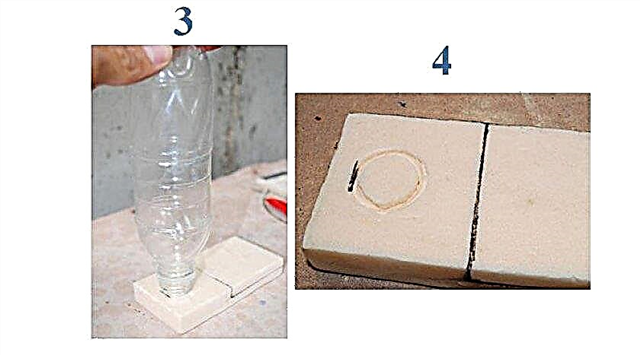
- Attach the bottle so that the outer edge of the neck is in contact with the mark.
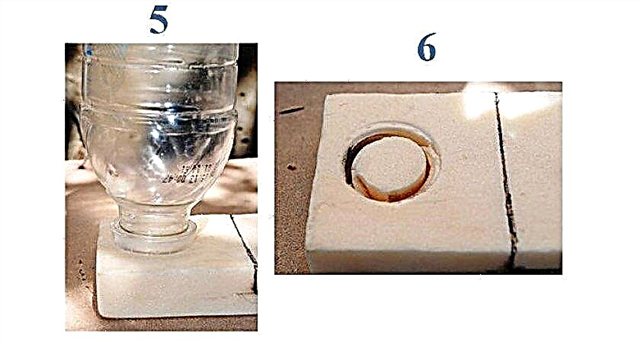
- Scroll the bottle so that the indented circle remains equal to the size of the neck.
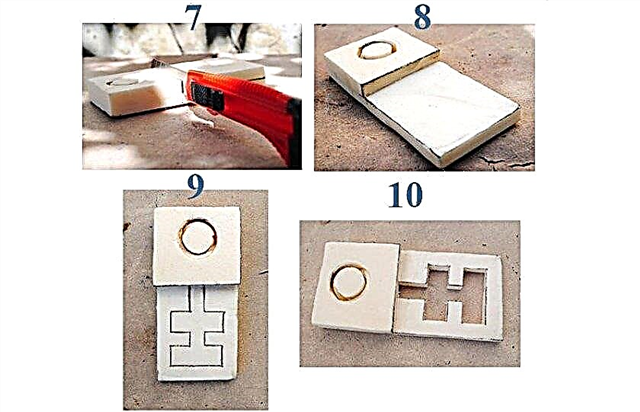
- Divide the circle in half, cut off half closer to the groove with a knife at an angle of 45 °.
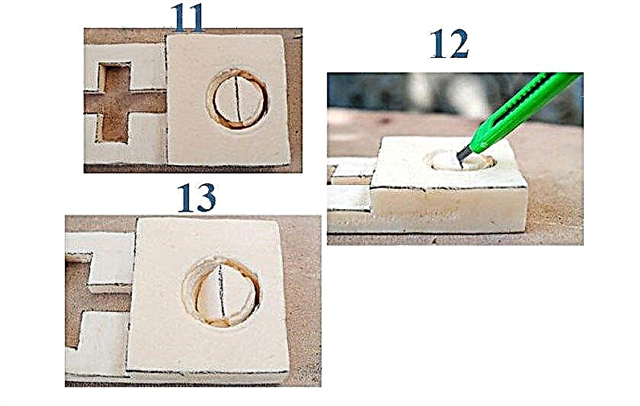
- Pierce the line between the groove and the circle with a nail - water will pass through the hole from the bottle.

- Stick tape on the bottom. It should form the bottom of the device.

- Put water in the bottle and attach it to the device upside down.

The finished fixture can be placed inside the hive. An individual mounted attachment is made in a similar way, but part of the design with the gutter undergoes some changes. To determine how deep the groove at the drinker will be, focus on the thickness of the groove hole. They must be equal so that the device is held tightly in the notch.
Preheating
As heating use a heating element from the aquarium. It is attached to the device by analogy with how it would be in the aquarium. The device heats the water, but does not allow it to boil.
Important! Boilers are not suitable for heating - water should not be boiled.
How to fix the drinker
The in-line drinking device is mounted on the ceiling under the pillow. The external hinged structure is placed so that the gutter is in the notch.
It’s easy to make a drinker for bees with your own hands, if you choose the right materials and calculate the sizes. With proper placement of the device, insects will receive a sufficient amount of water in a timely manner.














